Most folks in the micro fishing hobby seem to be using extremely lightweight spin fishing gear. The rods and fishing line used in micro fishing are often scaled down versions of traditional spin gear, making tiny lures and hooks easier to cast.
Any fly anglers reading this probably just had a light bulb go off in their heads. Fly rods and lines are specifically designed to cast lightweight flies. This makes a fly fishing setup ideal for targeting these wonderfully small species of fish.
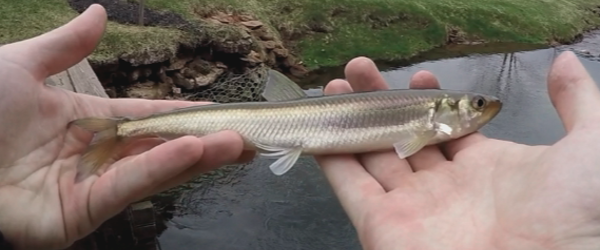
I enjoy great success micro fishing with a fly rod, sometimes even unintentionally when targeting more traditional sport fish. Let me go over why I think it has alot to offer micro fishing anglers, some of the tricks I use, and some potential drawbacks of micro fishing this way.
If you’re interested in learning how to micro fish with more traditional tackle, click here.
This post uses amazon affiliate links. I receive commission from any sales at no additional cost to yourself.
What is Micro Fishing Anyway?
For those of you unfamiliar with the hobby, micro fishing is when you purposely target small species of fish. These are often overlooked species such as chubs, dace, minnows, sculpins, sunfish etc.
This means micro fishing is really a subset of rough fishing. Rough fishing is when you target overlooked, neglected, and obscure species of fish. This often includes fish that fall into the micro category, but also includes larger fish such as s bowfin, red river horses, gar and carp.
The number of species available to target for both salt and fresh water is much larger than the few dozen traditional sport fish we know and love. Micro fishing is quite fun as you are often able to sight fish for them, as they’re typically less skittish than most sport fish.
There’s some debate on whether catching juvenile individuals of larger species counts as micro fishing. I’m of the thought that you should let the young fish be and allow them to grow undisturbed. Fishing unique, rarely targeted species of fish is much of the fun of micro fishing anyway.
Why use a Fly Rod for Micro Fishing?
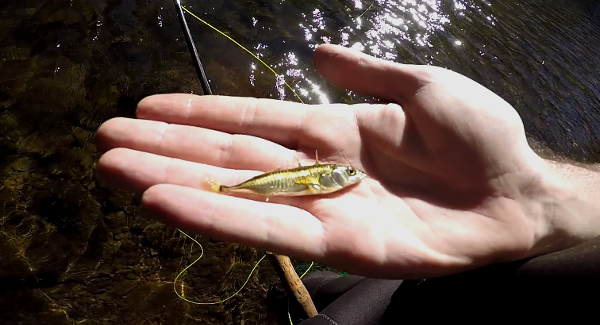
Let me start by saying I have nothing against using a spinning rod. They’re tons of fun, and can be an effective set up to micro fish with. I just feel like fly fishing has alot to offer this hobby.
Traditional spin fishing relies on the weight of the lure or terminal tackle to carry the line when casting. The problem we often run into with micro fishing is that the weight of the terminal tackle is often non-existent, so it’s much harder to cast a line out.
Yes you can use a bobber and/or split shot to help in casting light terminal tackle (and it does), but it doesn’t work in every situation.
A fly fishing setup is specifically designed to cast lightweight terminal tackle. Instead of relying on the weight of the lure, you use the weight of the fly line to deliver the fly to the fish. This means that casting essentially weightless flies is extremely easy with a fly rod.
This not only makes casting small terminal tackle easier with a fly rod, it also means that you can cast even smaller terminal tackle than is possible with spin rod or bait caster. Even the smallest jighead is going to be much bigger than the smallest fly for example.
There’s also an enormous variety of small flies available. I guarantee you’ll find a fly pattern that your target fish will strike. Even fish species traditionally fished for with strongly smelling bait can be taken on a fly, like catfish and carp (I know these don’t count as micro fish).
So the summarize, the advantages of micro fly fishing over micro spin fishing are:
- Easier to cast small terminal tackle (flies rather than small lures or bait).
- Can cast even smaller terminal tackle than spinning rods.
- Larger variety of small flies available than small lures.
- Can customize flies for your specific needs.
Rod Fly Fishing Complete Starter Package (Amazon Link) can be bought here if your interested in getting into the hobby.
How to Micro Fish with a Fly Rod?
Quite simply, the same way you would fly fish for any species, just with smaller flies. A very similar equipment set up used to catch trophy trout can be used to catch darters and minnows.
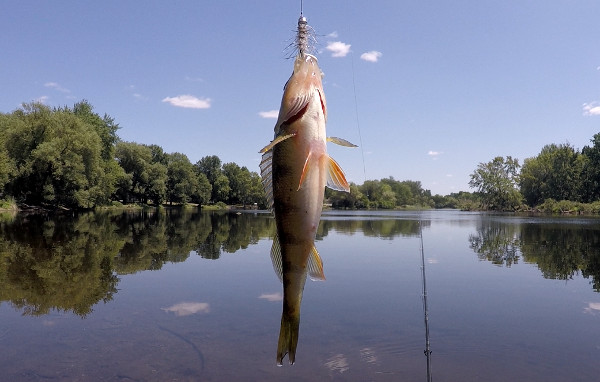
One thing I would change is the tippet strength. You might aswell go as light as possible, micro fish species are not going to be breaking anyone’s line. The heaviest (strongest) tippet I would use is 5 pound test, with lighter being better.
I will say though that many small fish species are surprisingly either A) predatory, or B) territorial. Small streamer patterns zipping by them often cause them to take chase and strike the fly.
Many other small species of fish are exceedingly curious. If you bounce a nymph pattern infront of them, it’ll often trigger a bite. Some species you’ll need to let the fly site on the bottom and twitch it, other species you’ll have to make it bounce on the bottom, and still others can be encouraged to bite by suspending the fly in the water column and twitching it slightly (or aggressively).
Tenkara Fly Fishing
Tenkara is a Japanese style of fly fishing that developed independently of the western style of fly fishing. It shares many similarities to the western style, but tends to be more minimalist in nature. As such, it’s a great choice for aspiring micro anglers.
Tenkara gets ride of the reel used in traditional fly angling. Equipment comprises of the Tenkara rod, the fly line (which is attached directly to the tip of the rod), tippet, and the fly.
Tenkara Rod and Starter Kit (Amazon Link) Can be bought here. This is a great set up for micro fly fishing.
What Fly Patterns to Use?
There’s no shortage of extremely small fly patterns available. Many trout anglers use extremely small midge patterns (Upper left corner in picture below), and surprisingly large trout will strike one of these flies. These small flies are also the perfect size for micro fishing.
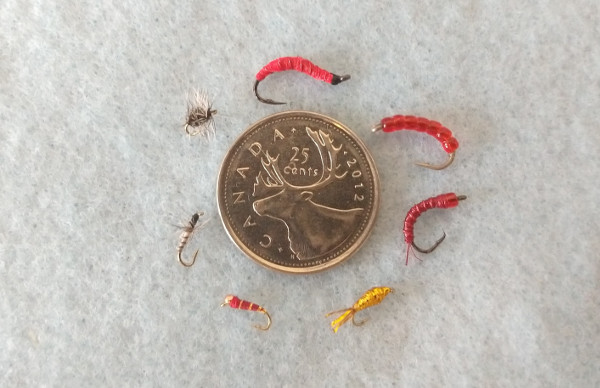
I tied all the above flies myself, the smallest I tie is size 20 (The smallest hooks in the picture above are size 20 dry fly hook, and size 20 nymph hook from white river fly shop brand). There are alot smaller hooks available, but I don’t feel like doing that to myself. A size 20 hook is difficult enough as it is, my hands are only so steady!
If you’re only interested in small hooks. You’ll likely find more success with fly tying hooks. The high the number, the smaller the hook. For example a size 10 is a fairly standard fly, size 20 is quite small, and size 32 is minuscule. As an afterthought, ice fishing gear also has some small hooks available.
While dry flies will work for many fish, i find wet flies (nymphs and streamers) more effective for most micro fishing. Most species of very small fish are feeding on small nymphs, amphipods, blood worms, copepods, fish fry, and other similar sized prey items.
If you’re interested in learning how to tie flies, I don’t recommend such small patterns. They’re quite difficult even for experienced fly tyers. Start with some classic easy to tie patterns, and go from there. I put together a list of tools you’ll need if you’re interested in starting to tie flies.
You can then customize flies to your specific needs. A fly not sinking fast enough for you? Tie it with a bead head and some underwire wrapping. Think a different colour fly would work better? No problem, tie that new modified fly yourself.
There’s actually a really cool advantage micro fishing offers the fly tyer. When you catch small species of fish, you are actually catching the forage of larger species of sport fish. You get to have an up close look at these baitfish species, allowing you to better mimic there colour, patterns, profile when tying flies for larger species.
Drawbacks of Micro Fishing With a Fly Rod.
The main draw back has more to do with urban fishing than micro fishing specifically. A large number of micro anglers I’ve seen posting pictures on social media fish in an urban setting. Unfortunately this often means there isn’t room for a proper back cast to get your fly out there.
A roll cast is a very good solution to this problem. A properly performed roll cast has little to no back cast, and makes fly fishing in the city practical. The distance of the overall cast forward is shorter with a roll cast though. This often isn’t that big of an issue as many target fish are relativity close to shore.
I feel like in many parks, a roll cast would be a viable option. Not so much along a canal in the middle of a busy downtown urban center though. Not unless you were extremely proficient at it. There’s still fly line flying about, and if you make a mistake it can results in a bit of a back cast. Random folks walking down the street won’t appreciate a fly in the side of the head.
I you’re married to you’re tiny lures, they can actually be cast with a fly rod. Lighter jigs are often used with fly rods for example.
If you prefer to use bait when fishing, a fly rod isn’t for you. The act of casting will very often cause bait to fall off a hook. I find flies just as effective as bait anyway, especially for minnows (they’re not picky).
A Handful of Micro-Fish I’ve Caught
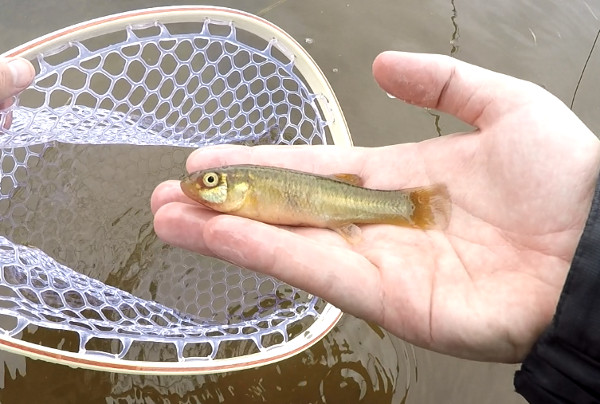
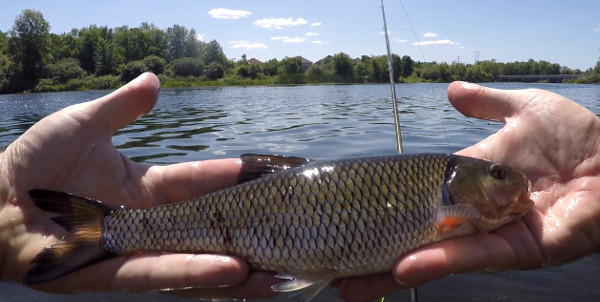
Here’s another post on microfishing, this time with conventional tackle.

5 thoughts on “Micro Fishing with a Fly Rod”